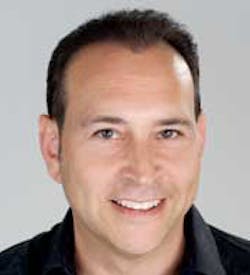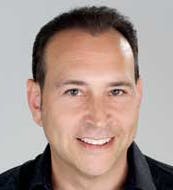Special training for your special-needs dental patients
It happens to us all.
You’re going about your usual hectic day at the office and you’re about to meet your new emergency patient. You go to meet the patient and notice he is in a wheelchair. The immediate thought that goes through your mind is, How am I going to treat this patient? Will I be able to move him into the dental chair, or will I need to somehow care for this patient while he sits in his wheelchair? Now add another challenging aspect — this patient appears to have Parkinson’s disease and can’t stop shaking his head.
Let’s face it — if you’re unprepared to handle patients with special needs, your fears will take control of you.
RELATED INFORMATION ...
Treating the dental patient with a developmental disorder
Orthdontists lack experience not motivation for treating patients with craniofacial anomalies
People with developmental disabilities face increased risk of oral health problems
What a "special" patient taught me
Handling challenging dental patients
Serving the deaf and hard-of-hearing patient population: An interview with Dr. Sabrina Magid
They’re out there.
The U.S. Census Bureau reported that, in 2002, 51.2 million residents had some level of disability and 32.5 million had a severe disability. In total, nearly 20% of American residents were living with some type of special need. More than 70% of residents over age 80 reported a disability. People with disabilities have significantly higher rates of oral health complications and dental disease than do people in the general population without special needs.
The Commission on Dental Accreditation defines special-needs patients as patients whose medical, physical, or social situations make it necessary to modify regular dental routines in order to provide dental treatment tailored for the individual. As dental professionals, we must adapt the usual course of treatment modalities in order to effectively render oral health care to these patients.
Always consider the dental experience from your patients’ perspective. It’s quite obvious to them that they are a “complex case.” After all, their misfortune has forced them into a predicament that they have to contend with every day, where seemingly simple tasks that so many of us take for granted are nearly insurmountable.
We are doctors.
Our decision to help others overrides any thoughts that may creep into the minds of some individuals outside the health profession when faced with the responsibility of helping those with special needs.
We were educated in dental school and, in some cases, a residency program, yet in private practice most dentists seldom treat patients with special needs. And although we may have good intentions to provide the best dental care possible, the skills that we learned in our dental education may not be sufficient for treating patients with special needs.
Points to ponder.
Dentists need not shy away from treating special-needs patients. There are certainly challenges inherent in their treatment, but those challenges are far from impossible to overcome. In fact, by making some minor clinical accommodations and making use of available resources, dentists can provide easy, successful, and cost-effective treatment to an underserved population.
Consultations with family members or home attendants can be effective in preparing special-needs patients for a dental appointment and emphasizing the importance of daily tooth brushing, flossing, and antimicrobial swish. Communication is key. You might recommend assisted tooth brushing so that the patient becomes more accustomed to manual manipulation in his or her mouth. Convey that the primary goal of this exercise is to desensitize the patient so that he or she can accept treatment more easily when it is administered.
Encourage caregivers to make dental appointments regularly and as far in advance as possible. Caregivers should understand that while you value the opportunity to care for them, their treatment requires more diligence with regard to scheduling, staff attendance, and office preparation.
Here are five helpful treatment tools for working with special-needs patients:
1. Mouth props — Many special-needs conditions are problematic because the patient suffers from involuntary bodily movement or is unable to maintain an open mouth for an extended period of time. Standard mouth props and retractors are a sufficient solution to a more imposing problem.
2. Medical Immobilization Devices (MID) — MIDs are standard medical devices that are available for virtually any portion of the body. As with mouth props and retractors, MIDs are useful for patients who have ambulatory issues or require additional support during the examination.
3. Attendant caregiver — Special-needs patients often live with a caregiver, possibly a family member or a professional. Inviting the caregiver to remain in the operatory during treatment can have a calming effect on the patient, as well as support the dental team when needed.
4. Rolled towels — Where posture, involuntary movement, fidgetiness, or discomfort pose problems for a patient, consider placing rolled blankets or towels under the patient’s knees for stability and support.
5. Sedation dentistry — Special-needs patients often find that sedation dentistry helps to control their underlying condition. In fact, sedation is the single most effective method of stabilizing erratic movements for patients afflicted with autism, cerebral palsy, Down syndrome, Parkinson’s disease, and the like. Sedation also helps to diminish patient anxiety and can make it easier for the dentist to communicate with a patient who might otherwise be easily distracted.
Pain-free dentistry.
Dentistry doesn’t hurt, but injections do. After all, once you’re numb, dental treatment is painless. DentalVibe is a cutting-edge injection comfort system that has revolutionized the concept of pain-free dentistry. Patented, award-winning, and approved by the FDA, this unique dental device uses brand-new pulsed vibration technology to totally block the sensation of pain from injections. Delivering a pain-free injection with the use of the DentalVibe at the beginning of a dental appointment will put patients at ease. It sets a calming tone for the remainder of the appointment, especially with special-needs patients. Visit www.dentalvibe.com to view video testimonials of happy patients, including those with special needs.
The world population continues to grow.
People are living longer than ever before, and the number of people with disabilities is rising. This segment of the population is in need of dental care, perhaps more than any other. Their conditions leave them vulnerable to serious complications stemming from poor dental care.
As oral health-care professionals, it is our ethical duty to care for these patients. Special-needs dentistry should not continue on in its currently inadequate state. With a bit of special training, dental care professionals can reduce anxiety, alleviate pain, and easily and cost-effectively administer oral health care to those who are a bit more challenging to treat.
Enjoy our wonderful profession!

